Looking for a premium wood finish that combines luxury and affordability? Natural walnut veneer gives homeowners, furniture makers, and interior designers the rich, distinctive look of solid walnut without the hefty price tag. In this guide, we’ll explore how walnut veneer transforms spaces with its warm chocolate tones and striking grain patterns, plus share practical tips for selecting high-quality veneer that will last for years.
Understanding Natural Walnut Veneer
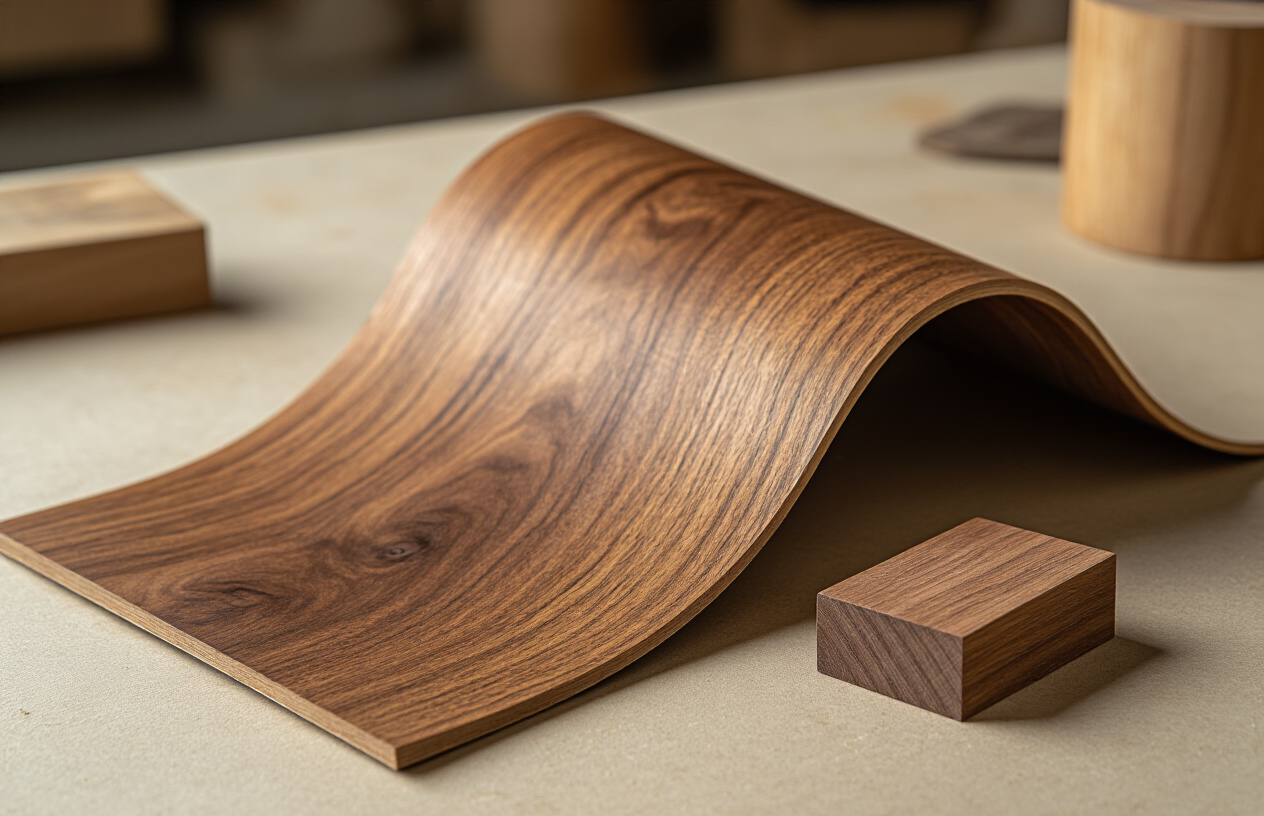
What is walnut veneer and how it’s made
Ever seen those gorgeous walnut furniture pieces with perfect grain patterns? Chances are you’re looking at walnut veneer, not solid wood. Walnut veneer is basically a super thin slice of real walnut wood—typically between 1/42″ to 1/16″ thick—that’s applied to a more stable substrate like MDF or plywood.
The magic happens in one of two ways. Traditional slicing uses massive knives to shave logs into delicate sheets, preserving the natural grain patterns we all drool over. Then there’s rotary cutting, where logs are spun against blades like a giant pencil sharpener, creating wider sheets with more dramatic patterns.
The coolest part? A single walnut log yields way more veneer than solid lumber, so we get more beautiful surfaces from fewer trees.
Distinctive characteristics of natural walnut
Natural walnut veneer is like the supermodel of wood surfaces. That rich, chocolate-brown heartwood gradually transitions to creamy sapwood, creating this stunning contrast you just can’t fake.
The grain pattern? Absolutely mesmerizing. Sometimes it’s straight and elegant, other times it’s wavy or curly. And don’t get me started on those figured patterns like burl or crotch—they’re basically wood art.
What makes walnut truly special is how it changes over time. Unlike cherry or maple that might darken, walnut actually lightens slightly with age and sunlight exposure. This subtle mellowing gives walnut veneer furniture this lived-in, heirloom quality that just gets better over time.
Sustainability benefits compared to solid walnut
Think about this: from one walnut log, you might get 800-1000 square feet of veneer but only about 20-30 square feet of solid boards. That’s a game-changer for our forests.
Walnut trees take 40-60 years to mature fully. When we use veneer, we’re stretching that precious resource dramatically further. Practical math says using veneer instead of solid walnut reduces the harvest pressure on walnut forests by about 30 times!
Beyond just tree conservation, there’s the carbon footprint angle too. Less raw material means less energy used in harvesting, processing, and transportation. Plus, the core materials used with veneer (like plywood or MDF) often incorporate recycled wood fiber or fast-growing plantation species.
The result? You get that premium walnut look with significantly less environmental impact. It’s luxury with a conscience.
Design Applications and Aesthetic Appeal
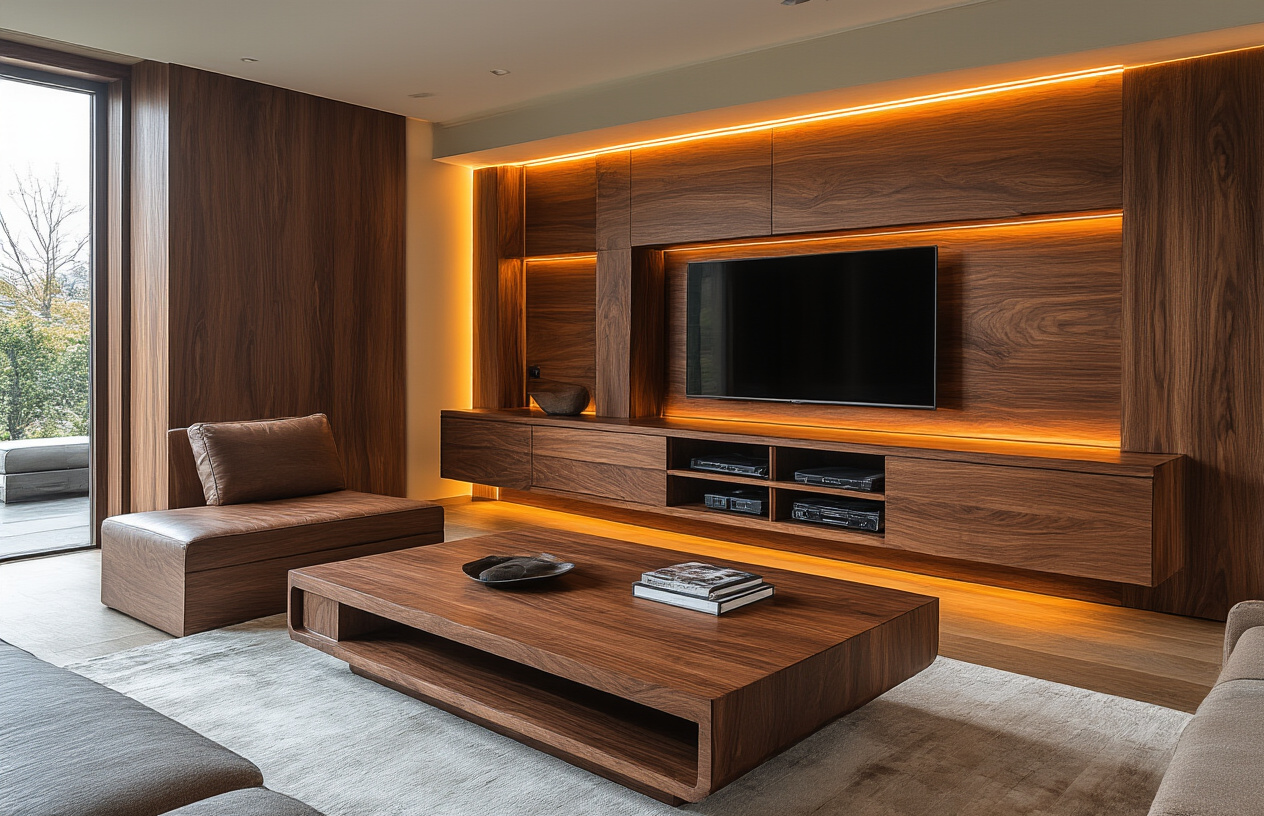
Popular furniture styles featuring walnut veneer
Mid-century modern furniture absolutely loves walnut veneer. Those sleek, tapered legs and clean lines get an instant upgrade when covered in this rich, chocolatey wood. Designers like Herman Miller and Knoll made it famous back in the day, and now every retro-inspired piece seems to showcase those signature walnut patterns.
Scandinavian design has also fallen hard for walnut veneer. The warmth balances out the minimalist approach, adding just enough character without overwhelming the simplicity. It’s that perfect sweet spot between statement and subtle.
For something more traditional, check out Art Deco pieces with their bold geometric patterns and symmetrical designs. Walnut veneer brings the drama these pieces demand.
Interior design trends utilizing walnut’s rich tones
The “modern organic” movement is all over walnut right now. Designers are pairing those deep brown tones with natural linens, raw concrete, and plenty of greenery. The contrast is killer.
Biophilic design (bringing nature indoors) practically requires walnut veneer. Those natural grain patterns create an instant connection to the outdoors without trying too hard.
Dark academia aesthetics? Impossible without walnut. Those moody, intellectual vibes need the gravitas that only walnut delivers.
Complementary materials and color palettes
Walnut plays nicely with:
| Material | Why It Works |
|---|---|
| Brass | The warm metallic tones echo walnut’s richness |
| Cream fabrics | Creates breathing room against the darkness |
| Black steel | Industrial edge meets natural warmth |
| Marble | Luxury meets luxury in perfect harmony |
Color-wise, walnut veneer thrives alongside deep emerald greens, navy blues, and burnt orange. For a more contemporary look, pair it with crisp whites and soft grays – the contrast lets the wood grain really pop.
Creating statement pieces with walnut veneer
Bookmatched walnut veneer is your secret weapon for jaw-dropping furniture. When those mirror-image grain patterns meet at the center of a tabletop or cabinet door, people notice.
Curved walnut veneer applications (think rounded credenzas or sculptural wall panels) show off the wood’s flexibility while creating visual interest that solid wood can’t match.
Mixing walnut veneer with other materials creates instant focal points. Think glass-front cabinets with walnut frames, or coffee tables with walnut tops and metal bases. The contrast draws the eye exactly where you want it.
Practical Benefits of Walnut Veneer
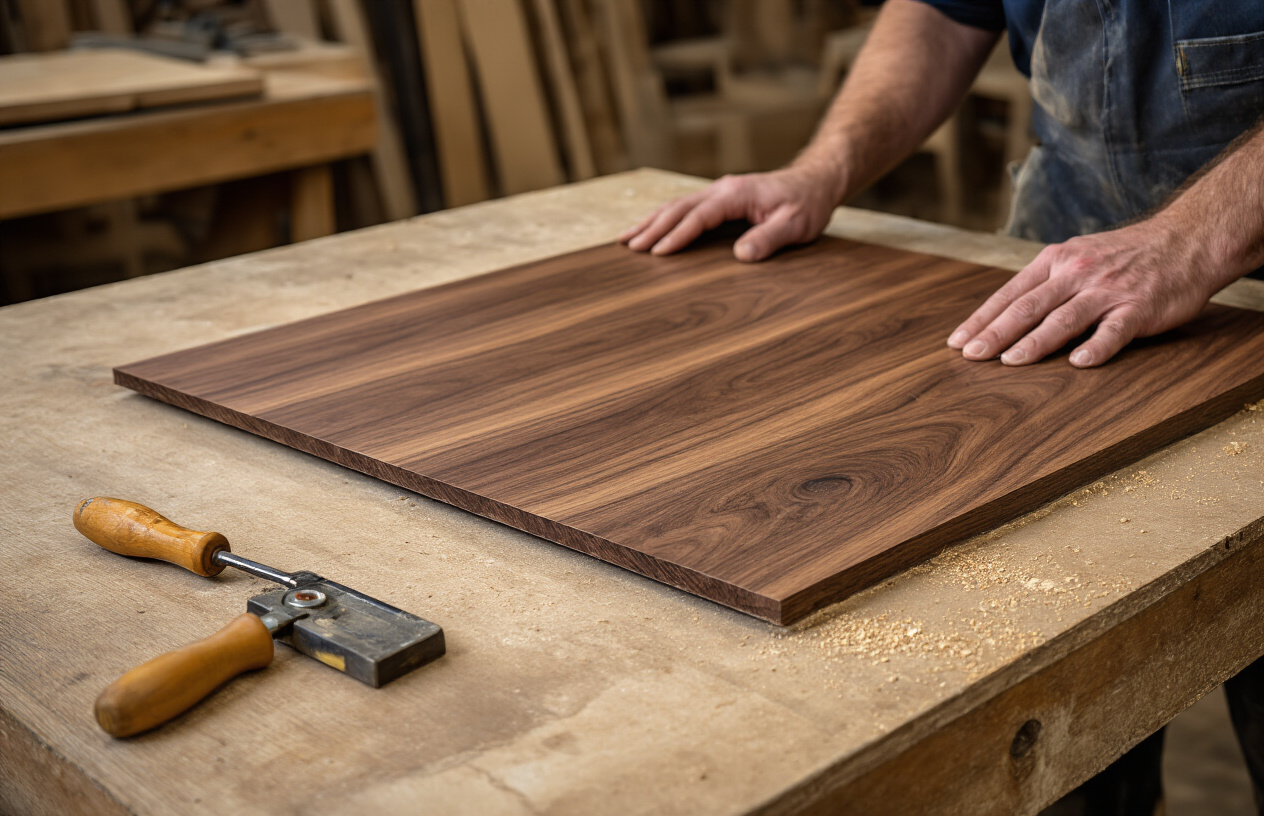
A. Cost advantages over solid walnut
Walnut is stunning, but let’s talk cash. Solid walnut furniture can make your wallet weep – we’re talking serious money for those beautiful grain patterns. Veneer? It’s the budget-friendly cousin that looks just as good at family reunions.
Think about it: with veneer, you’re getting that gorgeous walnut look for a fraction of the price. We’re talking 30-50% less than solid wood pieces. That antique-inspired dining table you’ve been eyeing? Suddenly within reach.
The math is simple. A thin slice of premium walnut stretched over quality substrate means you need dramatically less of that expensive timber. The core can be made from more affordable materials while you still get the visual punch of real walnut.
B. Dimensional stability in different environments
Ever had a solid wood door that suddenly won’t close in summer? That’s wood doing what wood does – expanding and contracting with humidity and temperature changes.
Walnut veneer simply doesn’t throw these tantrums. The engineered core materials beneath the veneer hold their shape regardless of whether your home feels like a sauna or a desert.
This stability is a game-changer for:
- Homes with radiant heating
- Coastal properties with high humidity
- Desert locations with extreme dryness
- Seasonal cabins that experience temperature swings
The cross-layered construction of veneered panels actively resists the warping, cupping, and splitting that plague solid wood pieces. Your furniture stays looking perfect year-round.
C. Versatility across various applications
Walnut veneer refuses to be pigeonholed. It’s the chameleon of wood finishes.
You can find it gracing:
- Sleek modern kitchen cabinets
- Mid-century inspired furniture
- Corporate boardroom tables
- Yacht interiors
- High-end speaker cabinets
- Architectural wall panels
- Custom car dashboards
The flexibility comes from how it’s made. Veneer can be applied to curved surfaces, wrapped around corners, and bonded to materials that solid walnut could never join with. This opens up design possibilities that simply aren’t feasible with solid lumber.
Designers love how veneer can be book-matched (mirror-imaged) to create striking symmetrical patterns that would be astronomically expensive or physically impossible with solid wood.
D. Weight considerations for large installations
Nobody talks about this enough, but weight matters tremendously in large projects.
A solid walnut conference table might require structural reinforcement of the floor. The veneered version? Standard office floors handle it without breaking a sweat.
This weight difference becomes crucial when considering:
- Wall paneling (less structural support needed)
- Upper kitchen cabinets (less strain on wall attachments)
- Furniture that needs to be moved occasionally
- Doors (less strain on hinges)
- Transportation costs during installation
The lighter weight also means installation teams work faster with less fatigue and fewer people needed on the job. All savings that eventually make their way back to your bottom line.
E. Environmental impact reduction
The environmental math is straightforward and compelling.
From a single walnut log:
- Solid lumber yields perhaps 2-3 pieces of furniture
- Veneer production can create surfaces for 20+ comparable pieces
This dramatically reduces the harvest pressure on walnut forests. You’re getting more beautiful walnut surfaces from fewer trees.
Modern veneer production is also remarkably efficient. Computer-guided slicing minimizes waste, and even the sawdust gets repurposed into products like particleboard or biomass fuel.
The core materials beneath veneers often utilize fast-growing species or engineered wood products that can be sustainably produced. This creates a finished product with a significantly lower carbon footprint than solid walnut while preserving the timeless beauty that walnut is prized for.
Selection Guide for Quality Walnut Veneer
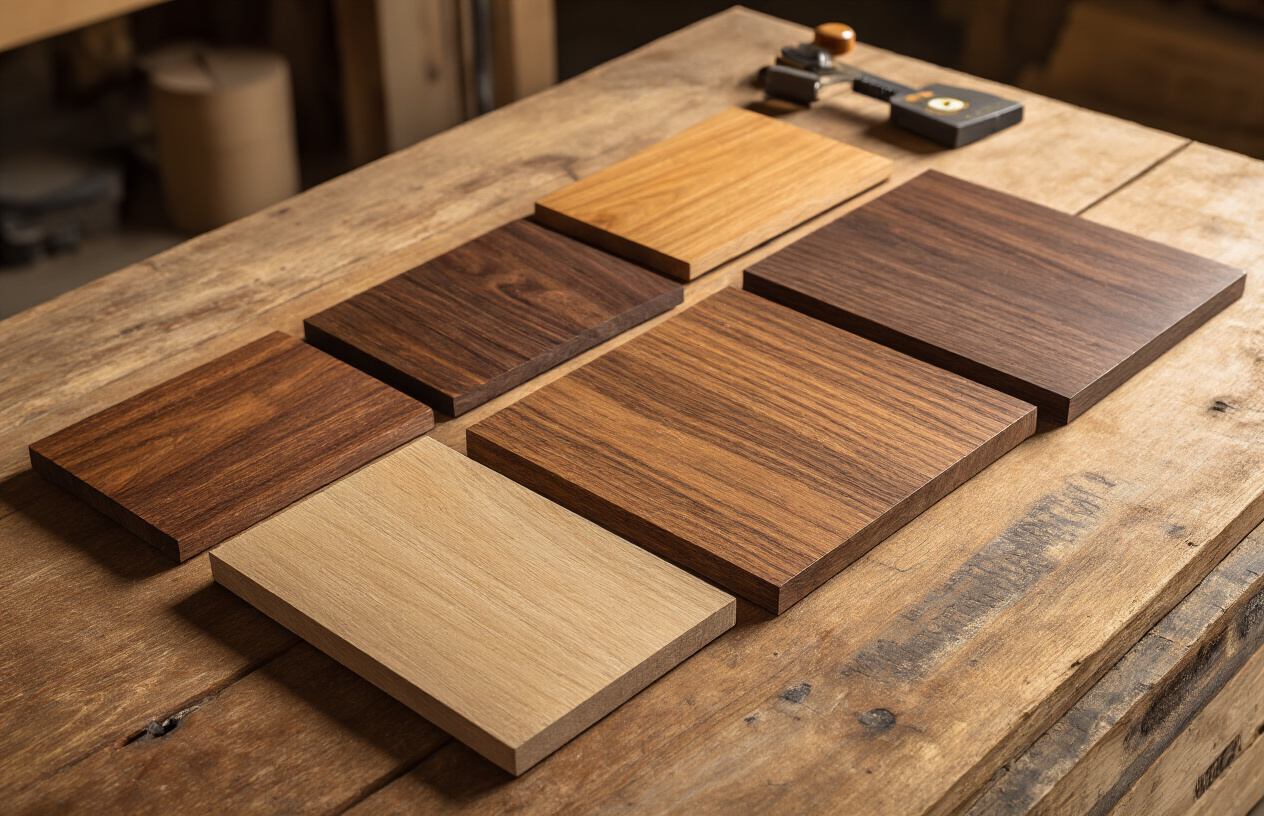
Identifying premium walnut veneer grades
You can spot top-notch walnut veneer the second you see it. Premium grades have that consistent color, minimal sapwood, and nearly zero defects.
The grading system breaks down like this:
| Grade | Characteristics | Best Uses |
|---|---|---|
| AA | Virtually flawless, consistent color, matched patterns | High-end furniture, luxury interiors |
| A | Minor imperfections, good color consistency | Fine cabinetry, quality furniture |
| B | Some color variation, occasional small knots | Commercial projects, less visible areas |
| C | Noticeable defects, significant color variations | Backing layers, utilitarian projects |
Premium walnut veneer feels different too – smooth to the touch with no rough patches or splinters. The backing should be flexible but not brittle.
Understanding figure patterns and grain options
Walnut veneer isn’t just one look. The magic is in the figure patterns that make each sheet unique.
Crown cut gives you those dramatic cathedrals while quarter cut provides straight, consistent lines. But flat cut? That’s where you get those wide, sweeping grain patterns everyone falls in love with.
For something truly spectacular, look for:
- Bird’s eye: tiny circular patterns resembling birds’ eyes
- Burl: swirling, complex grain like turbulent water
- Crotch: feathery pattern from where branches meet
- Fiddle back: rippled appearance that seems to move in the light
The grain direction matters too. Cross-grain gives depth while straight grain creates clean lines.
Thickness considerations for different projects
The thickness of your walnut veneer can make or break your project.
Standard thicknesses run from 0.5mm to 0.8mm, but here’s what you need to know:
Thinner veneers (0.5mm) are perfect for curved surfaces and give you more sheets per log, making them more eco-friendly. But they’re unforgiving if you sand through them.
For furniture facing high wear, go thicker (0.7-0.8mm). This gives you sanding leeway and better impact resistance.
Custom millwork typically needs mid-range thickness (0.6mm) – balancing workability with durability.
Remember that backing materials matter too. Phenolic backing adds stability while paper backing keeps things lightweight.
Care and Maintenance
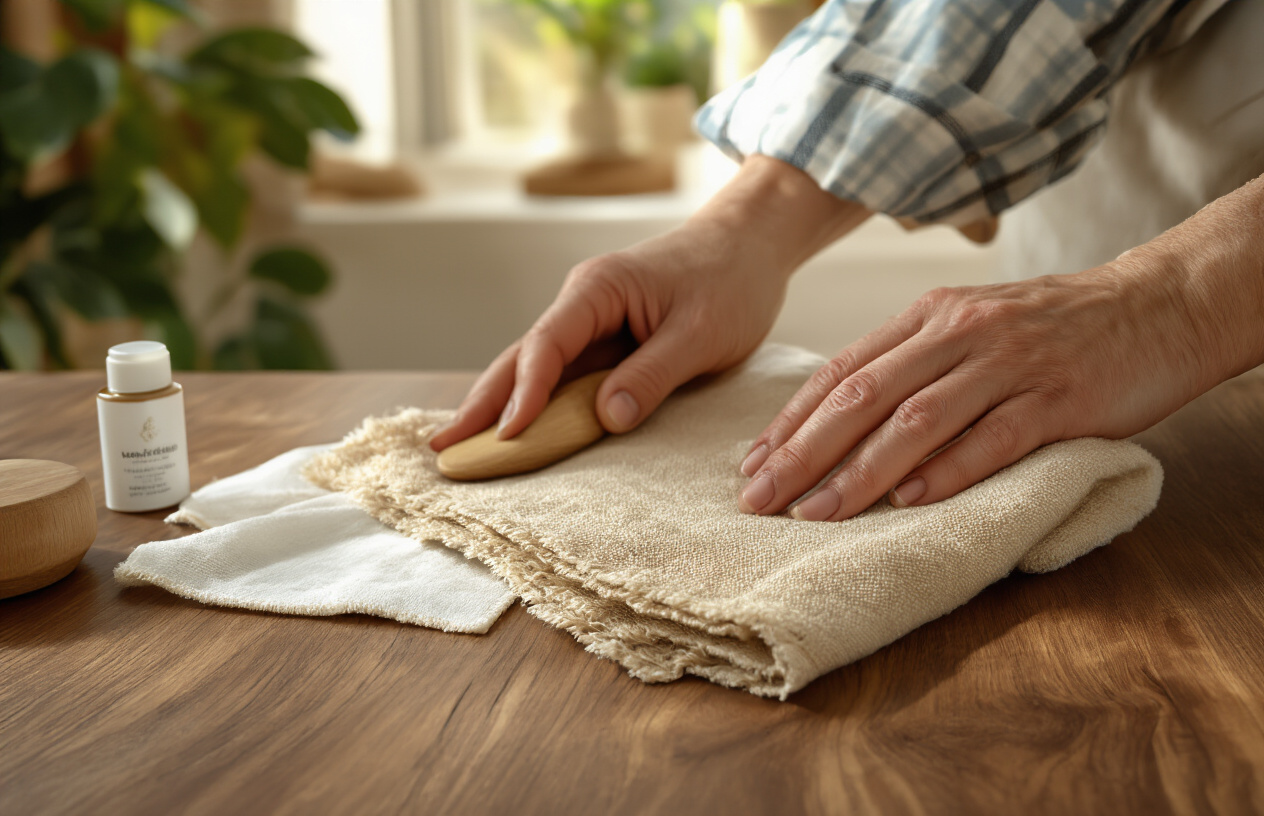
Protecting walnut veneer from sun damage
Walnut veneer is gorgeous until the sun turns it into a faded shadow of its former self. UV rays are silent killers of wood beauty, gradually lightening that rich chocolate color you paid premium dollars for.
The fix? Keep your walnut pieces away from direct sunlight. Pull those treasured items away from windows or add UV-filtering film to the glass. Curtains and blinds aren’t just for privacy—they’re your veneer’s best friends.
For extra protection, apply a quality UV-inhibiting finish. Think of it as sunscreen for your furniture. Most quality finishes contain UV blockers, but check the label to be sure.
Cleaning techniques for long-term beauty
Dust is the enemy. Small particles scratch your veneer over time like tiny sandpaper. Wipe surfaces with a soft, slightly damp cloth regularly—not wet, just barely damp.
Skip the grocery store polish. Many contain silicone that builds up and gets gummy. Instead, go for products specifically made for fine wood veneers.
A simple cleaning routine:
- Dust with a microfiber cloth
- Wipe with a barely damp cotton cloth
- Dry immediately with a clean cloth
- Apply quality veneer polish every 3-6 months
Repair options for scratches and damage
Caught your watch on the edge of your walnut table? Don’t panic. Minor scratches often respond to a walnut-colored furniture marker or crayon.
For deeper scratches, pick up a wood filler that matches walnut’s rich tone. Apply with a plastic putty knife (metal can create more damage), let dry, then lightly sand.
Water rings happen to the best of us. Try the mayonnaise trick—spread a thin layer, let sit overnight, then wipe clean. The oils help rehydrate the wood and often lift the white marks.
Refinishing possibilities to restore aged veneer
When your veneer looks tired despite your best efforts, refinishing might be the answer. But tread carefully—veneer is thin.
Sand with extreme caution using fine-grit sandpaper (220 grit or higher). Heavy pressure or coarse paper will tear right through your veneer layer.
Consider these refinishing options:
- Light buffing and recoating with clear finish
- French polishing for high-end pieces
- Professional refinishing for valuable antiques
Remember the veneer thickness—typically 1/42″ to 1/16″ thick. That’s thinner than a credit card. One aggressive sanding session can ruin your piece forever.
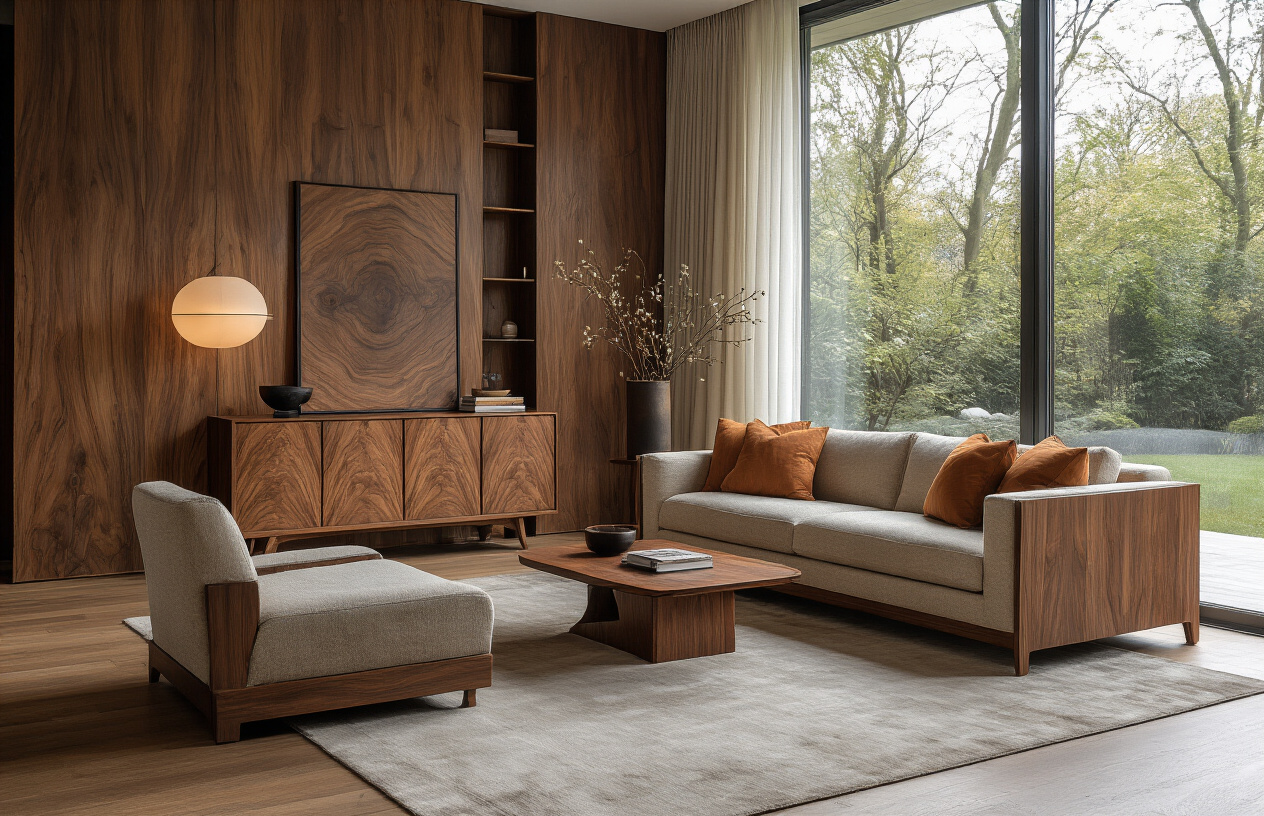
Natural walnut veneer stands as a premier choice for designers and homeowners seeking both elegance and practicality. Its rich color variations, distinctive grain patterns, and impressive versatility make it suitable for furniture, cabinetry, wall paneling, and decorative accents across various design styles. Beyond aesthetics, walnut veneer offers sustainability benefits, cost-effectiveness, and durability that solid wood alternatives cannot match.
When selecting and maintaining your walnut veneer products, remember to look for quality indicators like consistent coloration, proper backing materials, and reputable suppliers. Regular dusting, prompt spill cleanup, and proper humidity control will ensure your walnut veneer maintains its natural beauty for years to come. With proper care, this timeless material will continue to add warmth and sophistication to your space while remaining a responsible environmental choice.
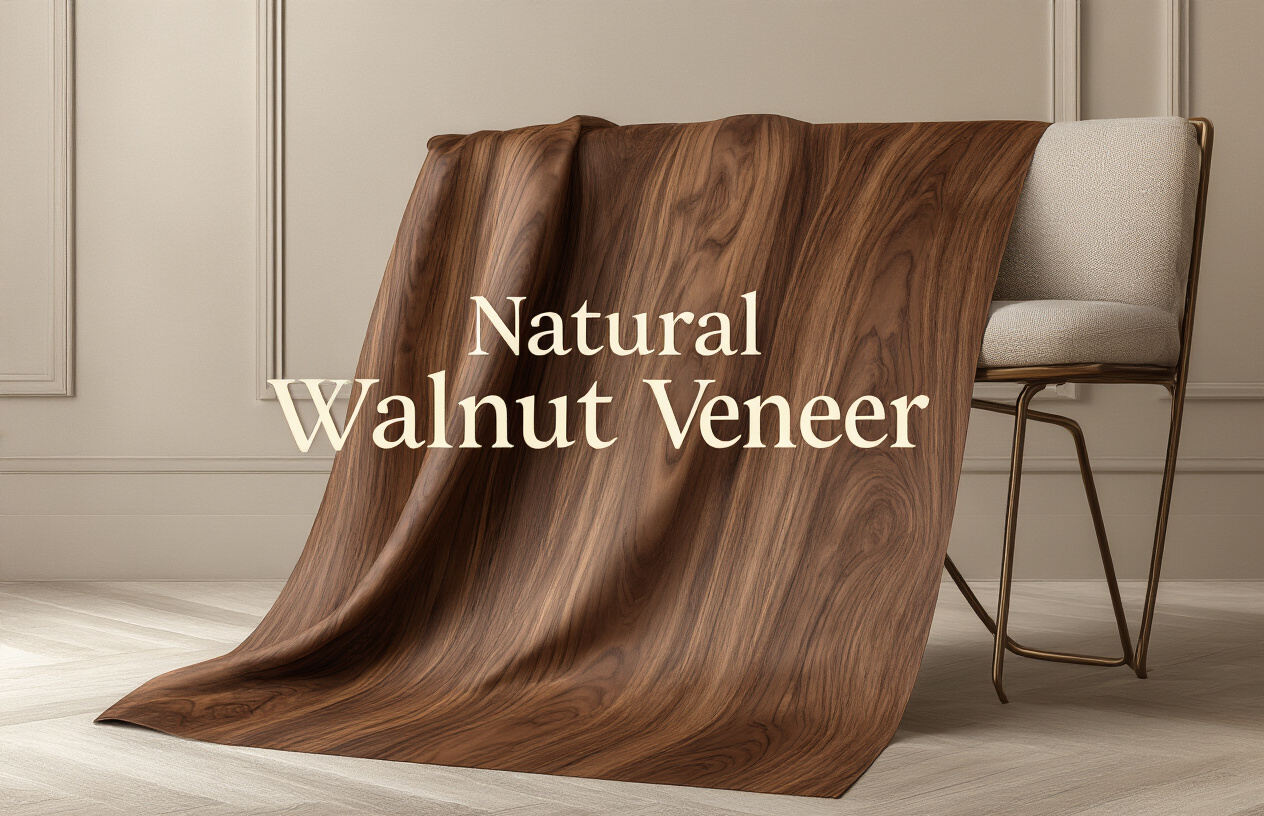
1 thought on “Natural Walnut Veneer: Elegance Meets Practicality”